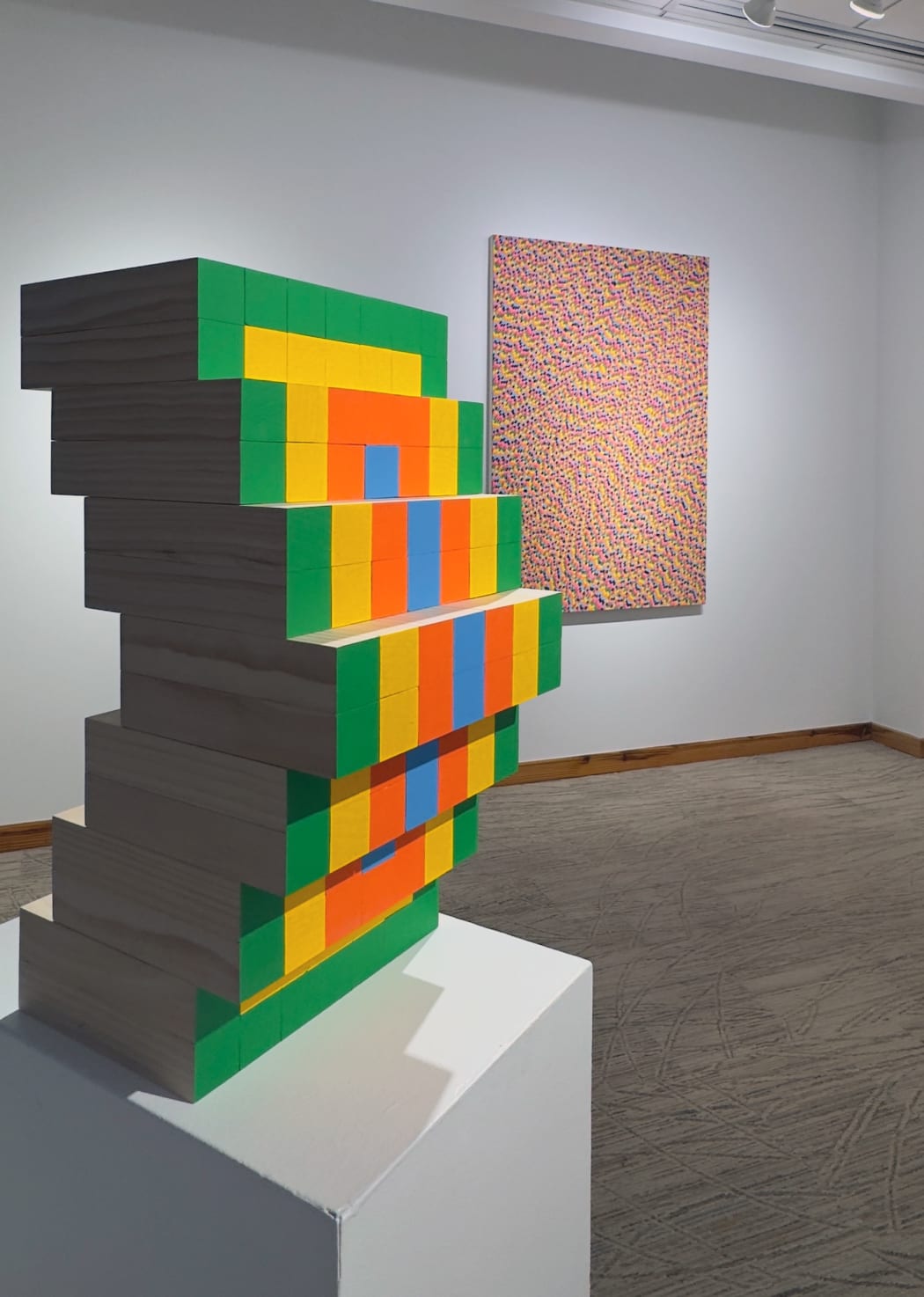
A recent review of "The Art of Math" exhibition at The Sun ATL presents an assessment that may have overlooked key aspects that connect the diverse works displayed. While the critique questions the coherence of the mathematical concept across the exhibition, a deeper examination reveals the rich mathematical underpinnings binding these works together.
The mathematical foundation of this exhibition extends far beyond geometric abstraction. Eight of the fourteen featured artists are respected mathematicians who create art, bringing their unique understanding of mathematical principles to their creative expressions. This critical context transforms how we perceive the relationship between the works and the exhibition's theme.
M.C. Escher's "Regular Division of the Plane" prints from 1957 represent pioneering work in tessellation and symmetry groups - mathematical concepts made visual through Escher's masterful hand. Similarly, Akio Hizume's Fibonacci Tower and aluminum Pleiades sculpture demonstrate mathematical sequences and astronomical relationships through three-dimensional form.
Oscar Reutersvärd, known as the "father of the impossible figure," presents four drawings that challenge our visual perception through carefully constructed mathematical paradoxes. These works, alongside contributions from mathematician-artists like Dick Esterle, Chaim Goodman-Strauss, JoHN MiLLeR, Bjarne Jespersen, and Rinus Roelofs, form a compelling exploration of mathematical principles through artistic media.
The inclusion of artists who aren't mathematicians by profession, such as Ato Ribeiro and Christopher Paul Dean, actually strengthens the exhibition's premise. Ribeiro's wooden Kente quilts employ patterns and methods rooted in mathematical principles, creating a dialogue between cultural tradition and mathematical structure. Dean's work - prominently featured yet unmentioned in the review - explicitly engages with repetition, pattern, and probability. His artist statement reveals how his practice explores "patterns in probability and randomness, where order emerges from seemingly unpredictable variations."
Victor Vasarely's print and Marek Tobolewski's Continuum series further demonstrate how mathematical thinking influences artistic creation across different styles and approaches.
Rather than being misaligned, the exhibition presents a nuanced view of how mathematics manifests in art - from explicit mathematical processes to intuitive explorations of pattern, repetition, and structure. This broad approach allows viewers to appreciate the many ways mathematical thinking can inform artistic creation.
Perhaps the brief timeline for reviewing this exhibition alongside two others contributed to an assessment that didn't fully explore these connections. "The Art of Math" offers not just geometric abstraction but a thoughtful exploration of the multifaceted relationship between mathematical principles and artistic expression.








